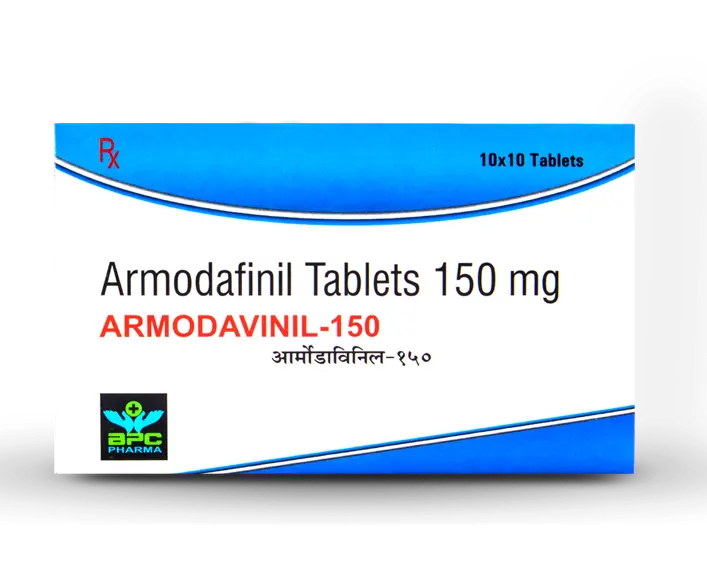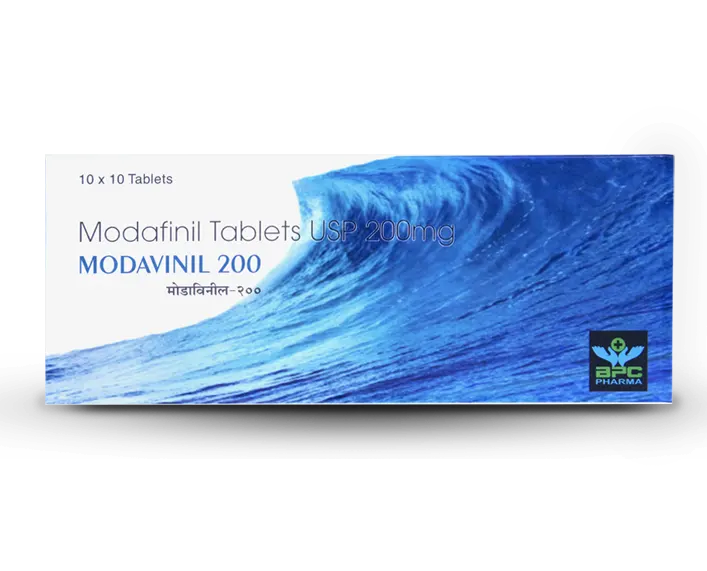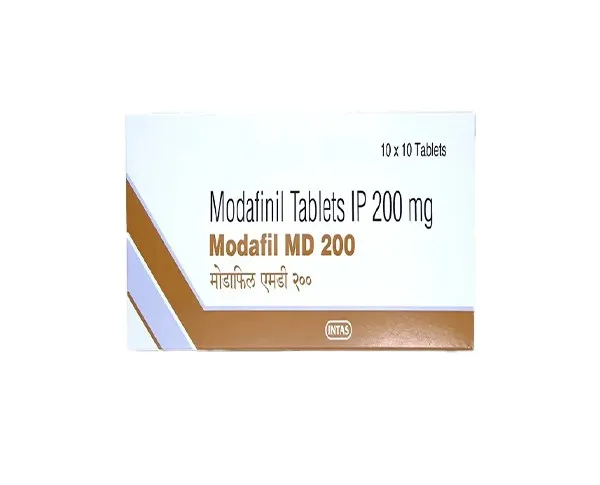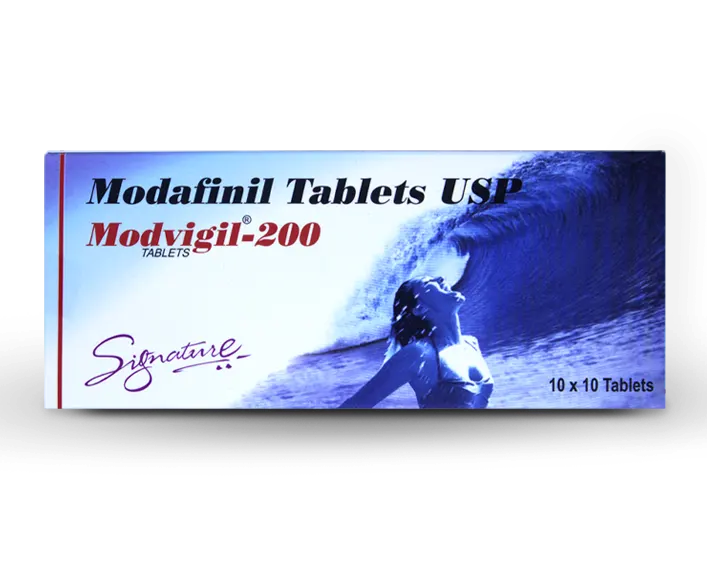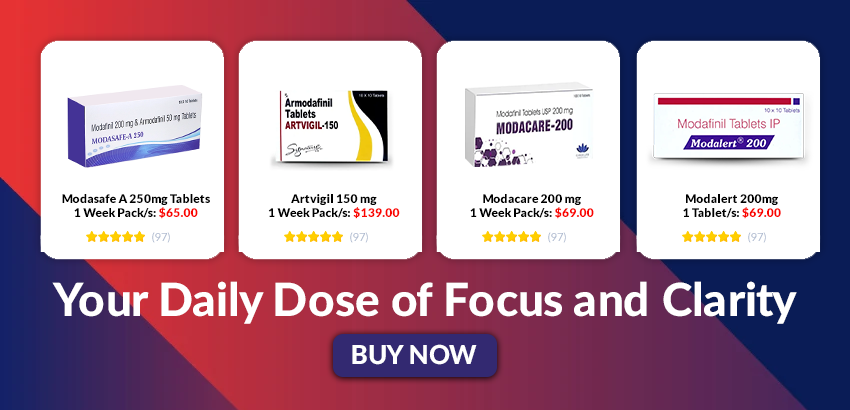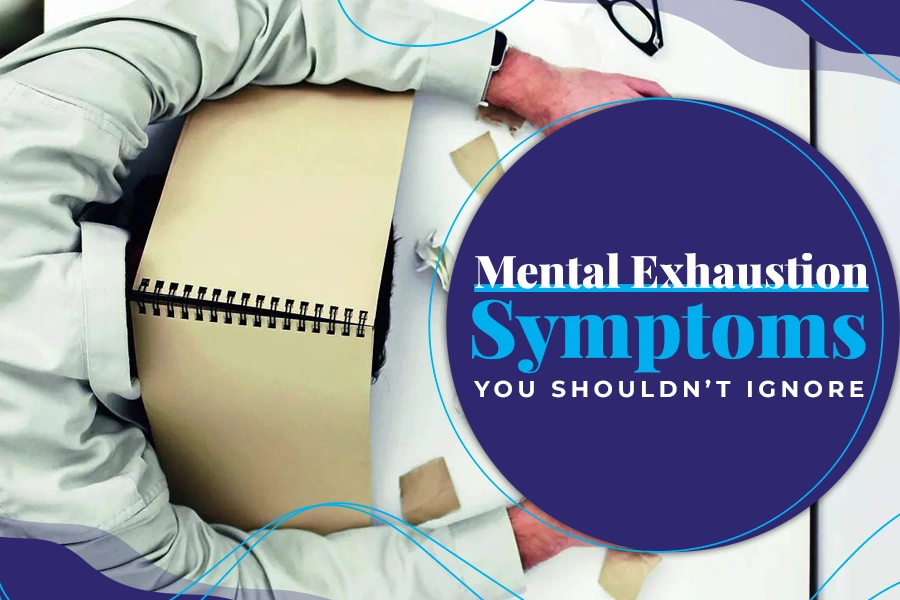What is ModaSafe 250 mg? A Beginner’s Guide to Smart Drugs
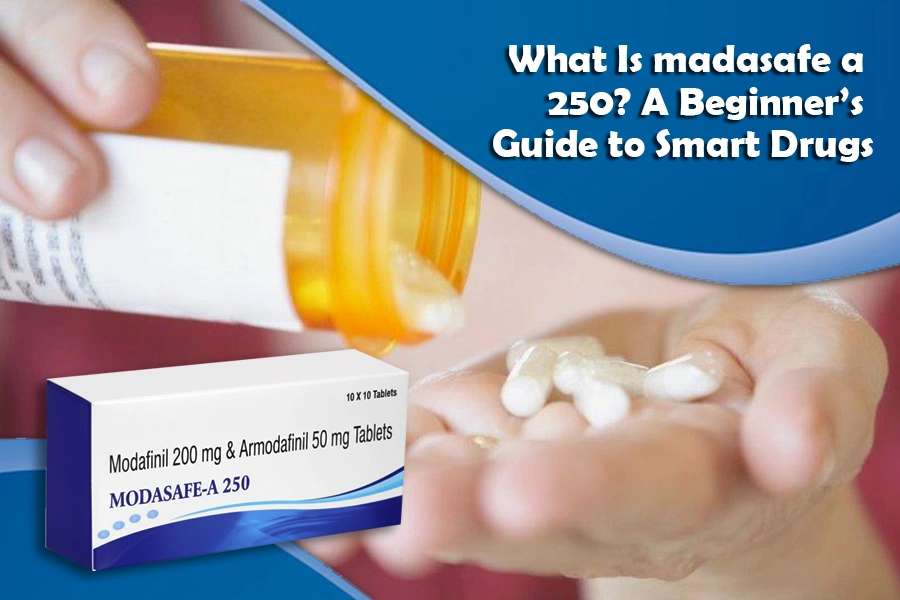
If you’ve heard people talk about “smart drugs” and wondered whether ModaSafe 250 mg is one of them, you’re in the right place. This smart drugs beginner guide explains what ModaSafe (often spelled Modasafe in some product listings) is, how it works, why people use it, what the evidence says about cognitive enhancement, safety considerations, and practical advice for anyone thinking about trying a smart drug.
Quick answer up front
ModaSafe 250 mg is a brand-name (or manufacturer-branded) formulation of modafinil, a prescription wakefulness-promoting medication most commonly used to treat conditions that cause excessive daytime sleepiness, such as narcolepsy, obstructive sleep apnea (as an adjunct), and shift work sleep disorder. It’s widely discussed in “nootropics” and productivity communities as a smart drug or cognitive enhancer. Still, its benefits for healthy people are modest and mixed, and it carries real risks that need to be understood.
What exactly is modafinil / ModaSafe?
Modafinil is a central nervous system stimulant (sometimes called a eugeroic, i.e., wakefulness-promoting agent) developed to treat pathological sleepiness. Products labeled Modasafe 250 mg contain modafinil as the active ingredient at a 250 mg strength (some manufacturers list 200–300 mg variants as well). It was originally approved for narcolepsy and related sleep disorders and is available only by prescription in many countries.
-
Armodavinil 150mg
$69.00 – $395.00Price range: $69.00 through $395.00Shop Now This product has multiple variants. The options may be chosen on the product page -
Modavinil 200mg
$69.00 – $395.00Price range: $69.00 through $395.00Shop Now This product has multiple variants. The options may be chosen on the product page -
Modafil Md 200 mg
$69.00 – $345.00Price range: $69.00 through $345.00Shop Now This product has multiple variants. The options may be chosen on the product page -
Modvigil 200mg
$65.00 – $395.00Price range: $65.00 through $395.00Shop Now This product has multiple variants. The options may be chosen on the product page
How does it work?
The exact biochemical mechanisms are complex and not fully nailed down, but modafinil appears to increase activity in wakefulness-promoting brain pathways (involving dopamine, orexin/hypocretin, histamine, and other neurotransmitters) without the same profile as classic amphetamine stimulants. That is one reason it produces alertness with a reportedly lower addiction potential than traditional stimulants, though it is not risk-free.
Why do people call it a “smart drug” or cognitive enhancer?
In non-medical contexts, “smart drugs” or cognitive enhancers are substances people use to try to boost concentration, wakefulness, productivity, and sometimes memory or executive function. Modafinil often gets grouped into that category because many healthy users report sharper focus and reduced fatigue during demanding tasks. Clinical and experimental studies, however, show mixed results: some cognitive functions (sustained attention, wakefulness, certain executive tasks) can improve, particularly in sleep-deprived people, while benefits for well-rested, healthy individuals are smaller and inconsistent. In short, plausible benefits, but not a miracle pill.
Common medical uses of Modasafe (modafinil)
- Narcolepsy — first-line treatment to reduce excessive daytime sleepiness.
- Shift Work Sleep Disorder — helps people on night/rotating schedules stay awake during work.
- Obstructive Sleep Apnea (adjunct) — used with primary treatments (e.g., CPAP) when residual daytime sleepiness persists.
Clinicians also sometimes prescribe it off-label (e.g., for some cases of ADHD, multiple sclerosis–related fatigue, or depression augmentation), but those uses are conditional on clinical judgment and evidence.
Typical dosing and the 250 mg point
Most official prescribing information lists 100 mg and 200 mg tablets as common doses, with typical adult doses for wakefulness around 200 mg once daily (timing depends on the condition). Branded Modasafe 250 mg is a higher single-tablet dose offered by some manufacturers, because it’s more than the typical recommended single doses in some regions, using that strength should be under medical advice. Never change your dose without consulting a doctor.
Effects people report
- Increased wakefulness and reduced subjective sleepiness.
- Improved ability to sustain attention during long tasks, especially when sleep-deprived
- Variable effects on memory and higher executive functions — sometimes measurable benefits, sometimes none.
- Side-effects (common): headache, nausea, nervousness, insomnia, dizziness. Serious but rare reactions include severe skin rashes, psychiatric symptoms, and hypersensitivity.
Safety, risks, and important warnings
This is a key section — don’t skim it.
- Prescription only / Medical supervision required: Modafinil should be used under a clinician’s guidance because it can interact with other drugs and has contraindications.
- Psychiatric reactions: Anxiety, agitation, hallucinations, and mood changes have been reported; some occurred in people without prior psychiatric history. If you develop severe mood changes, stop and seek medical help.
- Allergic/skin reactions: Rare but severe skin reactions (including Stevens-Johnson syndrome) have occurred; these require immediate discontinuation.
- Pregnancy / contraception: Modafinil is contraindicated during pregnancy and reduces the effectiveness of hormonal contraceptives; women of childbearing potential should discuss risks and contraception changes with their doctor.
- Cardiac concerns: Use cautiously if you have significant cardiovascular disease.
Because of these issues, the ethical and medical consensus is that modafinil is not something to take casually without a medical reason and appropriate oversight.
What does the research say about “smart drug” use in healthy people?
Clinical and experimental studies show that modafinil can improve vigilance, reaction time, and some executive functions—particularly when sleep pressure is high (e.g., sleep deprivation). However, studies on well-rested healthy adults find modest and task-specific gains that are not universal; some cognitive domains show no improvement. Side effects, individual variability, and long-term safety data for healthy users are limited. In other words: potential short-term benefits, uncertain long-term payoff, and ethical/medical trade-offs.
Practical advice for beginners (Smart drugs beginner guide)
If you’re new and curious about Modasafe 250 or modafinil in general, follow these principles:
- Talk to a clinician first. Don’t self-medicate. A doctor will assess for sleep disorders, psychiatric history, and drug interactions.
- Start with the lowest effective dose. Many prescribers use 100–200 mg/day. High single doses (like 250 mg) should only be used under clinical advice.
- Avoid if pregnant or planning pregnancy. Modafinil poses risks and interacts with contraceptives.
- Watch for side effects. Headache, trouble sleeping, anxiety, and skin changes are not uncommon — report them.
- Don’t rely on it as a substitute for sleep. Improving sleep hygiene, scheduling, and addressing underlying sleep disorders is crucial and healthier long term.
Legal and availability considerations
Modafinil is prescription-only in many countries (including the U.S., U.K., and India with varying regulations. Product names (Modasafe, Modalert, Provigil, etc.) are brand or generic labels produced by different manufacturers; quality and regulatory oversight vary by source. Buying without a prescription or from unverified online sellers carries risks of counterfeit or substandard products. Always use licensed pharmacies and get a prescription.
Alternatives and complementary approaches
If your goal is better focus and cognitive performance, consider first addressing lifestyle strategies that are safer and evidence-based:
- Sufficient, regular sleep (quantity and quality).
- Exercise — regular aerobic and resistance training improves cognition.
- Nutrition — balanced diet, adequate hydration.
- Time management & cognitive training — task design, Pomodoro techniques, deliberate practice.
If medical causes (sleep apnea, narcolepsy, depression, ADHD) are present, treat those first — sometimes treating the underlying condition removes the need for a drug.
Ethical and workplace considerations
Using prescription smart drugs without a medical indication raises ethical and legal issues (workplace policy violations, fairness concerns, and safety issues). If a workplace or school has rules about drug use, you should follow them and disclose medical prescriptions appropriately.
FAQ’s
Q: Is ModaSafe 250 the same as modafinil?
A: Yes — ModaSafe is a brand/label for tablets that contain modafinil as the active ingredient. The “250 mg” denotes tablet strength.
Q: Can modafinil make me smarter?
A: It can boost wakefulness and certain attention and executive functions, especially if you’re sleep-deprived. It’s not a guaranteed intelligence-increasing drug and the effects in well-rested, healthy people are mixed.
Q: Is 250 mg a safe dose?
A: Typical prescribed doses are 100–200 mg/day. A 250 mg tablet is a higher dose and should only be used under a clinician’s supervision because of increased side-effect risk.
Q: What are common side effects?
A: Headache, nausea, nervousness, insomnia, and dizziness are common; rare but serious reactions include severe skin rashes and psychiatric effects.
Q: Can students or professionals use it legally for exams or work?
A: Legality depends on whether you have a prescription. Ethically and institutionally, using prescription drugs without medical need may violate rules and can have consequences. Always follow policy and medical advice.
Bottom line
ModaSafe 250 mg is essentially a modafinil product marketed at a 250 mg strength. As part of a smart drugs beginner guide, the important lesson is this: modafinil can increase wakefulness and help with attention under specific circumstances, but it is a prescription medication with nontrivial side effects, contraindications, and legal considerations. If you’re curious, the next right step is a medical consultation — not buying pills online and self-experimenting.
References
- StatPearls / NCBI — Modafinil overview and indications. NCBI
- WebMD — Modafinil (Provigil) — uses and side effects. WebMD
- DailyMed / FDA label — Modafinil tablet prescribing information and patient counseling. DailyMed
AccessData / FDA label updates and post-marketing adverse reaction reports. FDA Access Data



